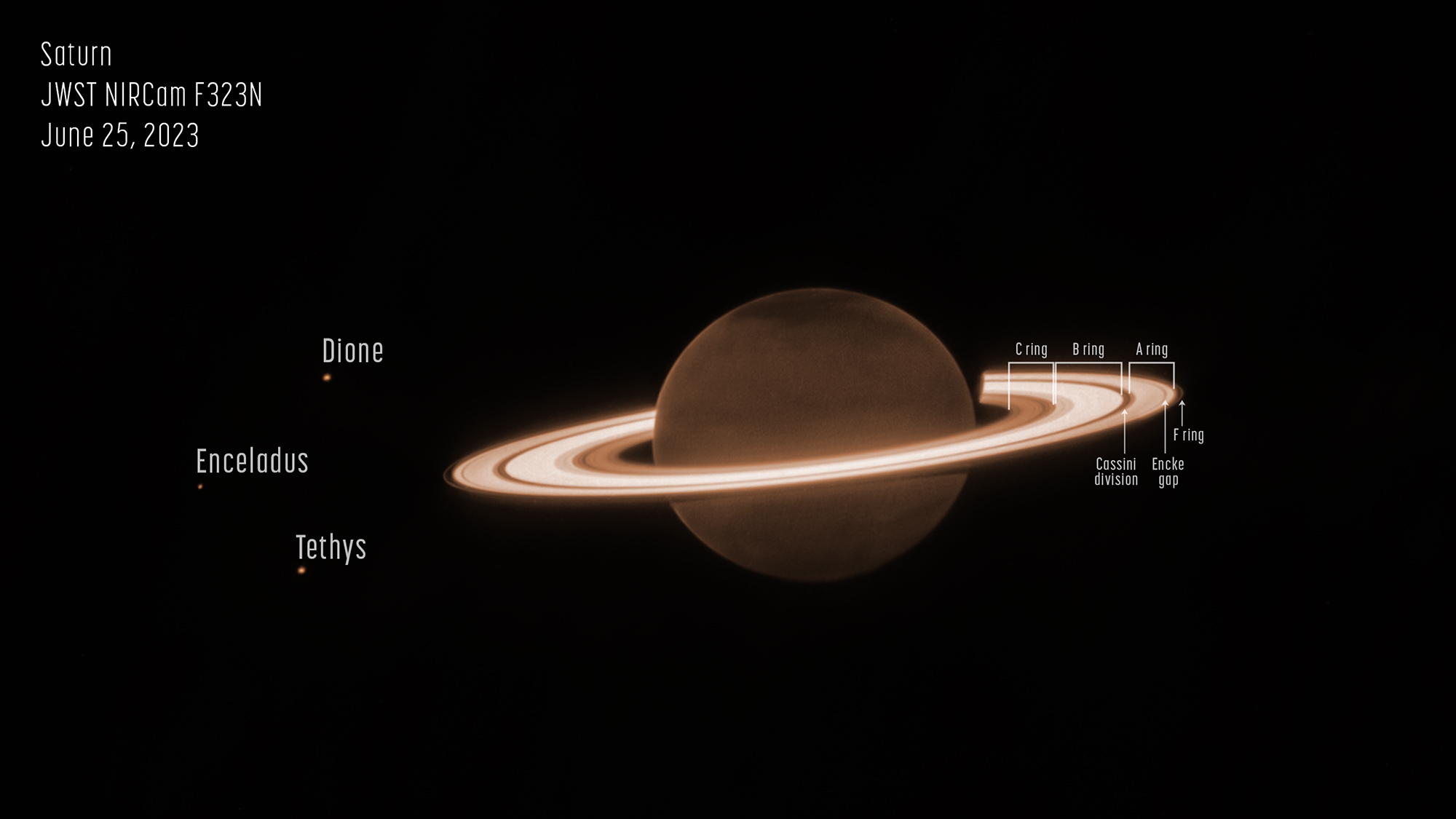STScI: Saturn’s Rings Shine in Webb’s Observations of Ringed Planet

Saturn itself appears extremely dark at this infrared wavelength observed by the telescope, as methane gas absorbs almost all of the sunlight falling on the atmosphere. However, the icy rings stay relatively bright, leading to the unusual appearance of Saturn in the Webb image.
This image was taken as part of Webb Guaranteed Time Observation program 1247. The program included several very deep exposures of Saturn, which were designed to test the telescope’s capacity to detect faint moons around the planet and its bright rings. Any newly discovered moons could help scientists put together a more complete picture of the current system of Saturn, as well as its past.
This new image of Saturn clearly shows details within the planet’s ring system, along with several of the planet’s moons – Dione, Enceladus, and Tethys. Additional deeper exposures (not shown here) will allow the team to probe some of the planet’s fainter rings, not visible in this image, including the thin G ring and the diffuse E ring. Saturn’s rings are made up of an array of rocky and icy fragments – the particles range in size from smaller than a grain of sand to a few as large as mountains on Earth. Researchers recently used Webb to explore Enceladus, and found a large plume jetting from the southern pole of the moon that contains both particles and plentiful amounts of water vapor – this plume feeds Saturn’s E ring.
Saturn’s atmosphere also shows surprising and unexpected detail. Although the Cassini spacecraft observed the atmosphere at greater clarity, this is the first time that the planet’s atmosphere has been seen with this clarity at this particular wavelength (3.23 microns), which is unique to Webb. The large, dark, diffuse structures in the northern hemisphere do not follow the planet’s lines of latitude, so this image is lacking the familiar striped appearance that is typically seen from Saturn’s deeper atmospheric layers. The patchiness is reminiscent of large-scale planetary waves in the stratospheric aerosols high above the main clouds, potentially similar to those seen in early Webb NIRCam observations of Jupiter.
When comparing the northern and southern poles of the planet in this image, the differences in appearance are typical with known seasonal changes on Saturn. For example, Saturn is currently experiencing northern summertime, with the southern hemisphere emerging from the darkness at the end of a winter. However, the northern pole is particularly dark, perhaps due to an unknown seasonal process affecting polar aerosols in particular. A tiny hint of brightening towards the edge of Saturn’s disk might be due to high-altitude methane fluorescence (the process of emitting light after absorbing light), emission from the trihydrogen ion (H3+) in the ionosphere, or both; spectroscopy from Webb could help confirm this.
Missions like NASA’s Pioneer 11, Voyagers 1 and 2, the Cassini spacecraft, and the Hubble Space Telescope have tracked Saturn’s atmosphere and rings for many decades. These observations from Webb are just a hint at what this observatory will add to Saturn’s story in the coming years as the science team delves deep into the data to prepare peer-reviewed results.
